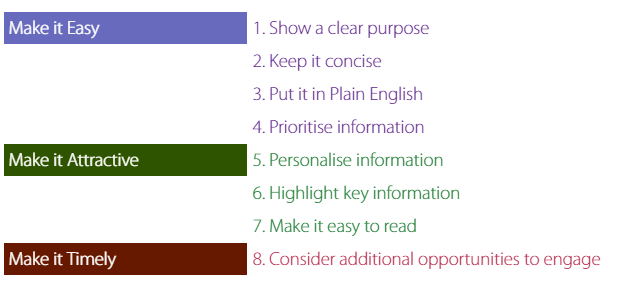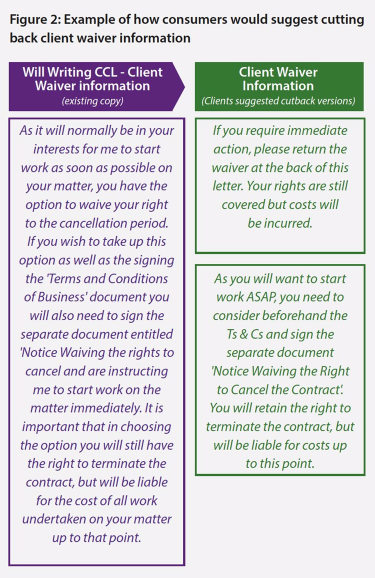20.06.17
Client Care Letters: Key Principles: Part 1
In the first of a series of three articles concerning client care letters, Sue Chandler explains why CCLs are a great opportunity to win over your client.

CCLs are a great opportunity to get your client ‘on board’ for their legal journey with you. However, CCLs are frequently a turn off for clients, as research published in November 2016 confirmed: Research into Client Care Letters: qualitative research report, available at CILEx Regulation.
Clients often find it hard to engage with CCLs for many reasons, including that they are frequently several pages long, contain lengthy and wordy paragraphs, are often printed in small font, and use legalistic words and phrases. These issues are more problematic for vulnerable consumers. Vulnerability can be dynamic and, with legal cases being a distress purchase, clients who may not normally be vulnerable may become so due to their life circumstances. For example, during a divorce where there is a dispute about child custody.
The research provides eight key principles to follow when preparing a CCL. These principles will be focused on in this and future articles.

Principle 1: Show a clear purpose
It is crucial that your client engages with your CCL and does not put it to one side for later, which often leads to vital information being overlooked. Clients must be clearly informed about the role of CCLs, and what they are expected to do with them.
Use directional headings to achieve this
The most important heading is that at the beginning of a letter. It should be directional, that is, explain the purpose of the letter. It should be clear what action the client should take, with a description of what the client should do. For example: ‘Your Will Writing Confirmation Letter (Important information about the legal process – please read).’
Explain the letter’s purpose
By providing a short summary sentence in the opening paragraph of the letter, which makes clear the reason for sending the letter. For example: ‘I am writing to you to confirm the work we will do for you, and provide full details of our terms of business.’
Summarise contents on the first page
Because consumers have a limited attention span, it is essential to place important information on the first and second page of the CCL. Providing a brief description of what the letter contains on the first page is an alternative way to ensure information is not missed. For example:
Key information provided in this letter:
- Confirmation of work to be completed
- Estimated Costs
- Timescales and next steps
- Terms of business
- Complaints procedures’
Principle 2: Keep it concise
Less is more! Consumers lose attention when there is excessive detail.
- Avoid repetition.
- Aim for short sentences and paragraphs, so key details
stand out. - Make content client specific and avoid using generic information.
Figure 2 contains suggestions made during the research to shorten client waiver information.

While the ‘ideal’ 1–2 page letter may not be realistic, consider whether some information could be signposted in the CCL and contained in a separate document or subsequent communication.
Principle 3: Use Plain English
Accessible language is the key to enabling consumers, regardless of their background, to understand your CCL. This is particularly pertinent for those with lower literacy levels and for whom English is a second language.
If you need to refer to a section from legislation, provide a succinct, non-legal explanation; and avoid complex or archaic language and or legal terms. The Plain English guide is a good starting point, for example: ‘endeavour’ becomes ‘try’; ‘matter’ becomes ‘issue’; and ‘disbursements’ become ‘costs’.2
Avoid using vague and or caveated language, for example, timing estimates such as: ‘It could take anything from a few days to a few months.’ A more helpful guide to a client could be: ‘The process, from when you accept an offer through to completion, is likely to take between 8 and 12 weeks’, together with an explanation of the types of issues that could cause delays.
If there really is no alternative but to use legal terms because of the nature of the client’s legal issue, then you might consider including a glossary. The Plain English Campaign has suggested some explanations of legal terms which you may find helpful.
Next steps
- How easy is it to engage with your CCL?
- Have you ever put it to the test?
- Why not ask a family member or friend to read through your letter and give feedback?
- How many tweaks will you make to your CCL this month to gain even better client satisfaction?

